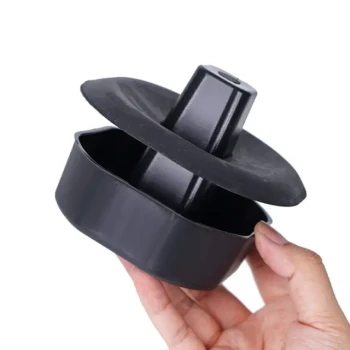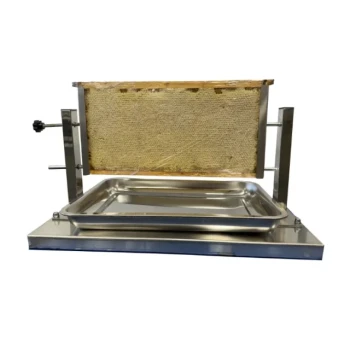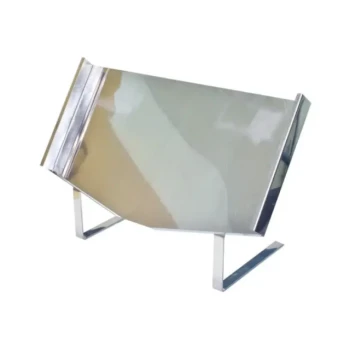At its core, a top bar hive stand simply elevates the hive, while the roof serves as its primary protection from the elements. The stand lifts the hive body off the ground for easier access and pest control, and the roof—which can be flat, gabled, ventilated, hinged, or a simple lift-off lid—shields the colony from rain, sun, and temperature extremes.
The design of your hive stand and roof is not merely about structure; it's a critical decision that directly influences hive health, pest management, and your own physical comfort as a beekeeper. The best choice balances protection for the bees with accessibility for you.
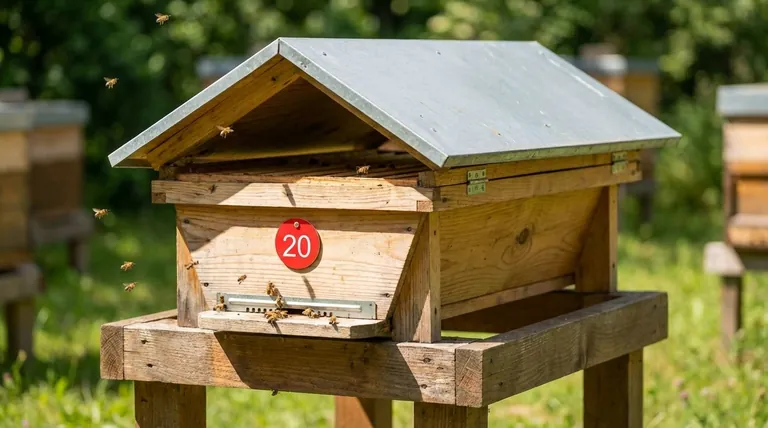
The Role of the Hive Stand: More Than Just Elevation
A hive stand is the foundation of your beekeeping setup. While its main purpose is to support the horizontal hive body, its design has several practical implications.
Elevating for Beekeeper Comfort
Working a hive at ground level leads to significant back and knee strain. A properly designed stand raises the hive to a comfortable working height, typically waist-level, making inspections far more manageable and enjoyable.
Protecting Against Pests and Moisture
Lifting the hive off the ground is a crucial first step in hive defense. It creates a barrier against crawling pests like ants and reduces the risk of wood rot and internal dampness from ground moisture wicking into the hive body.
Ensuring Stability
A top bar hive is long and can become very heavy when full of bees, honey, and comb. The stand must provide a stable, level base to prevent the hive from tipping over in high winds or on uneven ground.
Deconstructing the Top bar Hive Roof
The roof is the colony's primary shield against the external environment. Unlike the standardized inner and outer covers of a Langstroth hive, top bar hive roofs offer more design variability.
The Primary Function: Weather Protection
The most basic job of the roof is to keep rain and snow out and to provide shade from the intense summer sun. A weatherproof, durable roof is non-negotiable for colony survival.
Design Variation 1: Gabled vs. Flat Roofs
A gabled (or pitched) roof is excellent at shedding rain and snow, preventing water from pooling. The attic space it creates can also be used for ventilation or to house insulation material.
A flat roof is simpler to construct and provides a convenient surface to place tools or a smoker during hive inspections. However, it must be perfectly level or have a slight tilt to prevent water accumulation.
Design Variation 2: Ventilated Roofs
Moisture is a greater threat to a wintering colony than cold. A ventilated roof incorporates vents that allow damp, warm air to escape the hive, preventing condensation from dripping down onto the bees and comb.
Design Variation 3: Hinged vs. Lift-Off Roofs
A hinged roof is a key feature of many well-designed top bar hives. It allows the beekeeper to open the hive without having to lift off and set aside a heavy, cumbersome lid, freeing up a hand for inspections.
A simple lift-off roof is easier to build but requires you to completely remove it and find a place to set it during inspections. These are often held in place by their own weight or with a heavy object like a brick.
Understanding the Trade-offs
Choosing a stand and roof design involves balancing several factors. There is no single "best" design, only the one that is best for your specific climate, goals, and physical needs.
Simplicity vs. Features
A basic stand of cinder blocks and a simple, flat lift-off lid is the easiest and cheapest to build. However, investing in a purpose-built stand and a gabled, hinged, and ventilated roof provides significant long-term benefits for both hive health and beekeeper comfort.
Durability vs. Weight
Covering a wooden roof with metal sheeting greatly increases its lifespan and weather resistance. The trade-off is added weight, which can make a hinged design more difficult to engineer and a lift-off design more challenging to handle.
Making the Right Choice for Your Apiary
Your decision should be guided by your primary beekeeping goals.
- If your primary focus is simplicity and low cost: A stand made of cinder blocks and a simple, flat lift-off roof will function effectively.
- If your primary focus is optimal hive health: A gabled and ventilated roof is superior for managing internal moisture and temperature year-round.
- If your primary focus is beekeeper convenience: A purpose-built stand that raises the hive to waist height combined with a hinged roof will make inspections significantly easier.
Ultimately, understanding these components empowers you to create a hive environment that benefits both your bees and your beekeeping practice.
Summary Table:
| Component | Primary Function | Key Design Variations |
|---|---|---|
| Hive Stand | Elevates hive for access & pest control | Purpose-built stands, cinder blocks |
| Hive Roof | Protects from weather & regulates climate | Gabled, Flat, Ventilated, Hinged, Lift-off |
Ready to build a healthier, more manageable apiary?
The right equipment is the foundation of successful beekeeping. At HONESTBEE, we supply durable, well-designed beekeeping supplies and equipment to commercial apiaries and distributors through our wholesale-focused operations. Let us help you equip your operation with stands and roofs that protect your colonies and make your work easier.
Contact HONESTBEE today to discuss your wholesale needs and discover how our equipment can support your apiary's success.
Visual Guide
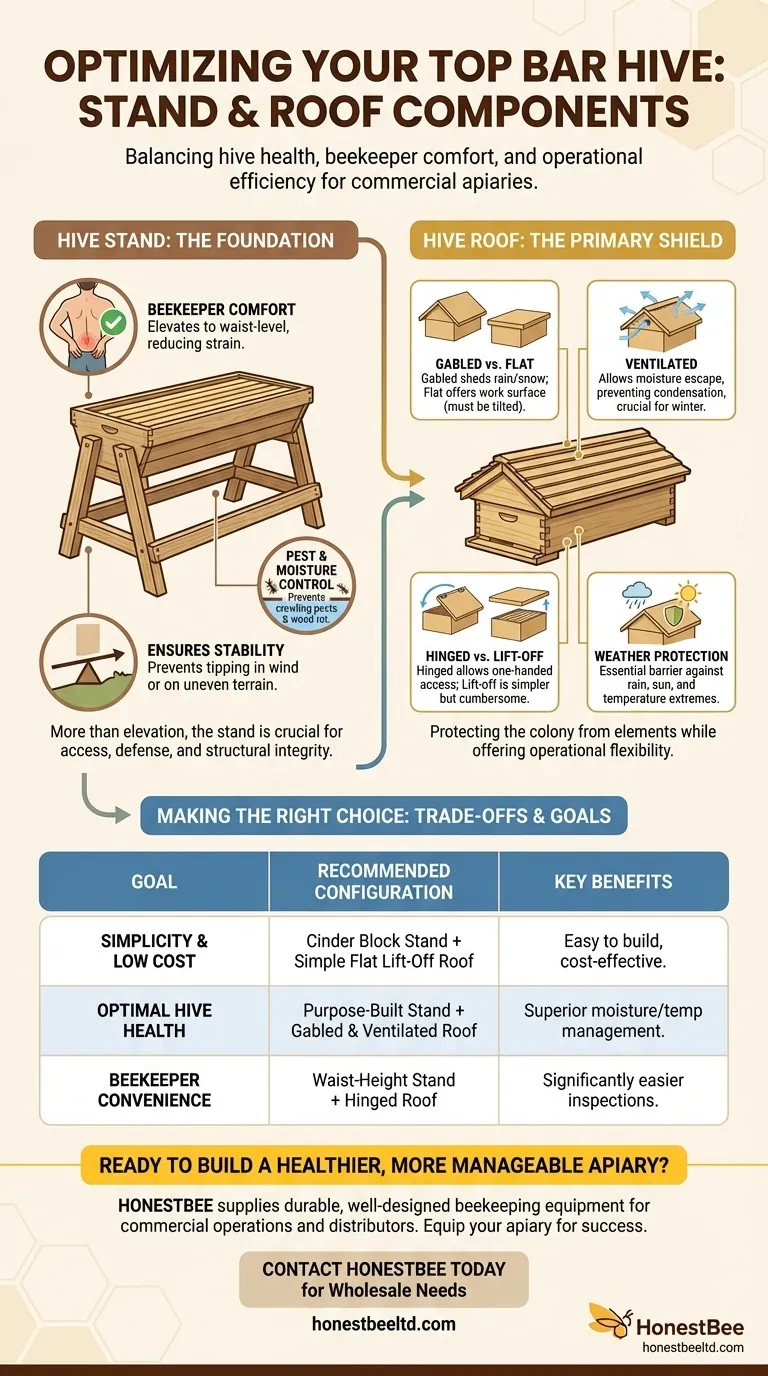
Related Products
- Professional Engraved Round Hive Number Tags for Beekeeping
- Plastic Bee Hive Stand for Beekeeping
- Metal Hive Feet Bee Hive Stand for Ant Protection
- Long Langstroth Style Horizontal Top Bar Hive for Wholesale
- Professional Drop-Style Hive Handles for Beekeeping
People Also Ask
- How can hive stands be made more secure in windy areas? Anchor Your Apiary Against the Elements
- What maintenance is required for hive straps? A Guide to Cam Buckle vs. Ratchet Strap Care
- What is the purpose of a hive stand, and why is it beneficial? Elevate Your Hive for Colony Health and Beekeeper Comfort
- Do I need a hive stand? Essential for Bee Health & Easier Beekeeping
- Why is it recommended to buy at least two bee hives? Boost Your Success with a Second Colony





